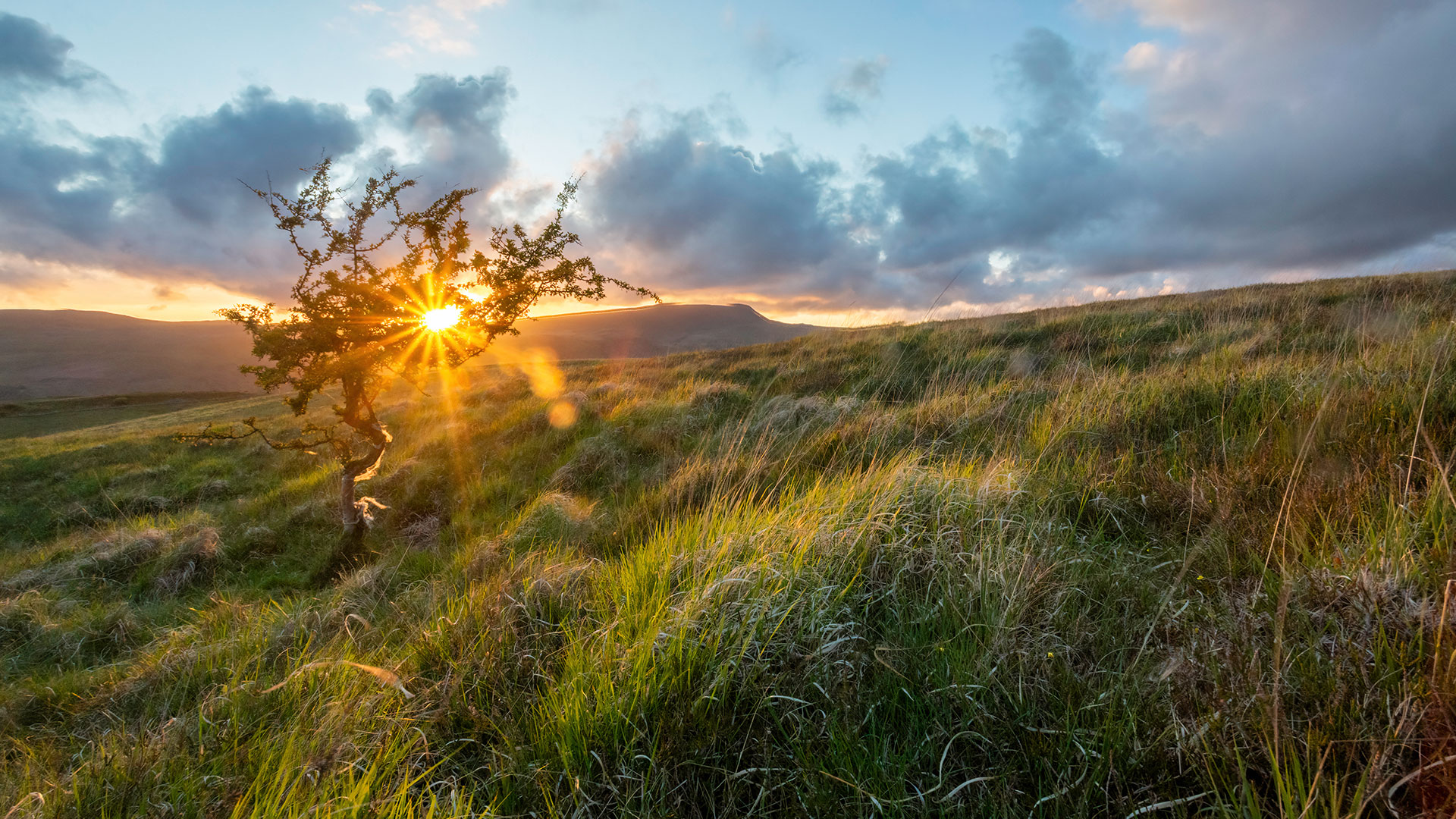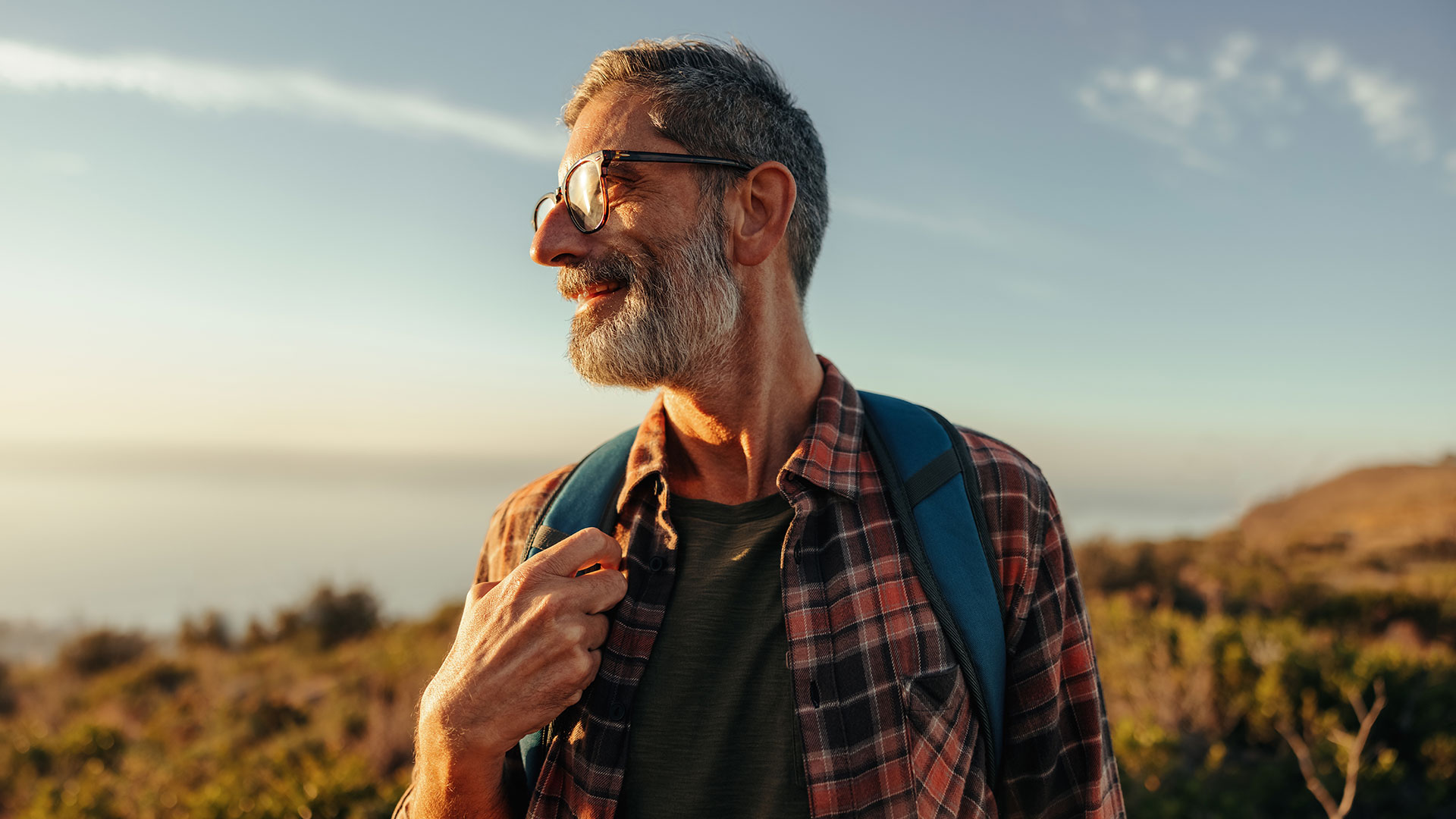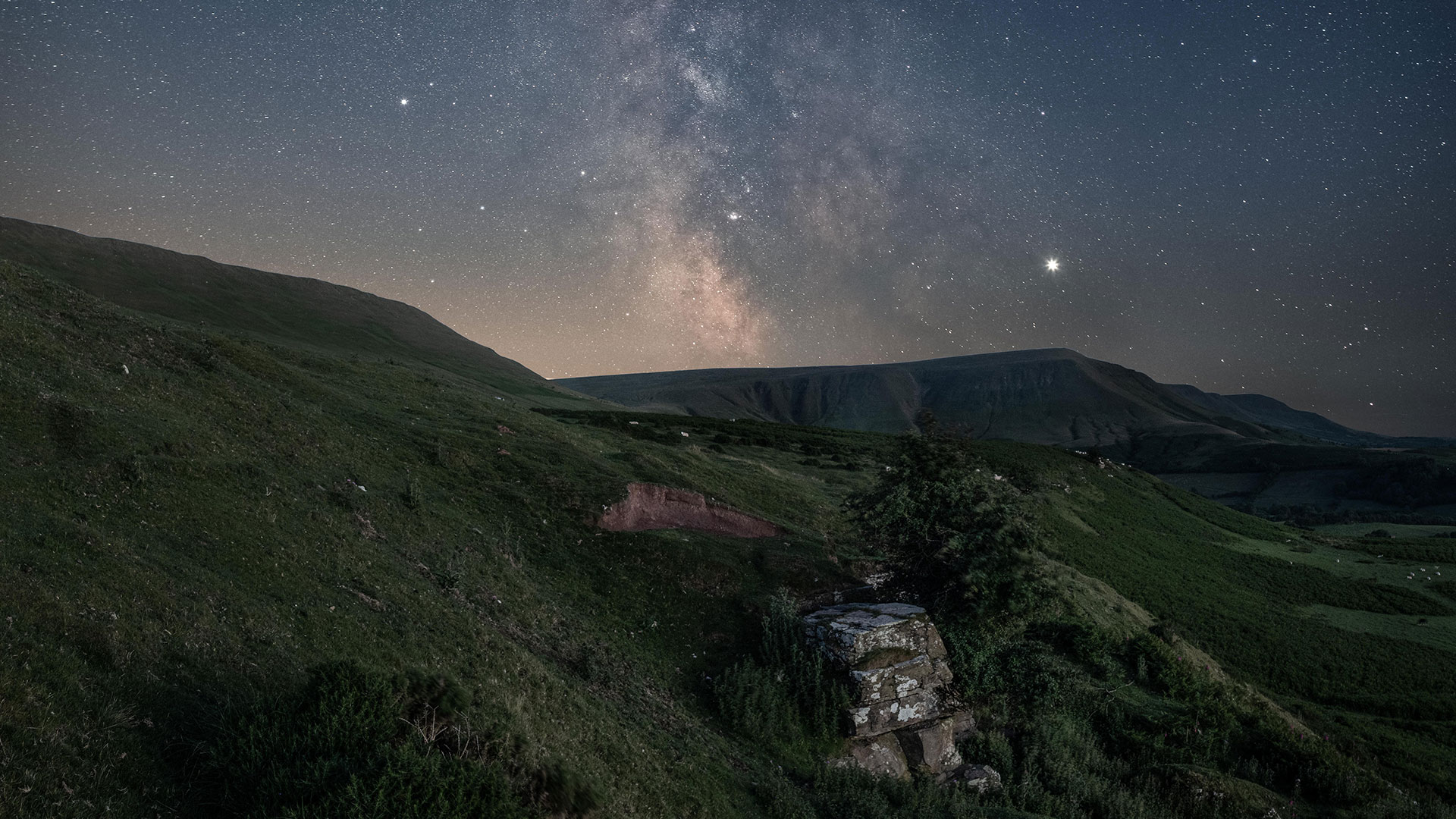Between the ecological ceiling and the social foundation lies the just and safe space. Within the National Park’s version of the doughnut, this is the space in which we would want our second purpose activities to take place.
In other words, opportunities for understanding and enjoying the National Park should only happen in such a way that they do not cause us to breach our ecological ceiling, or push our residents below the social foundation.
For each element we have defined where this dual boundary lies. These are shown as ‘goals’ on the diagram below. We have also identified key indicators that give us a snapshot of where we are and set these in the boxes against our goals. We then use these indicators to approximate how far we are from meeting these goals, these are the red wedges that extend beyond the blue circle. Wedges that overshoot demonstrate that these factors are having an unsustainable environmental impact. Wedges that show a shortfall are impacting community sustainability.
The National Park Core
The architects of National Park designation saw National Parks as providing opportunities for free access to the countryside to all members of society, for what they termed “open air recreation”.
This was a key element of social reform introduced after the horror of the Second World War and was seen as critical to the social and economic restoration of the nation, alongside the creation of the welfare state, the NHS and paid holidays.
How people access and utilise the countryside has been totally transformed from this post war vision. Not only has the population of the UK grown significantly – there are approximately 13 million more people in the UK than in 1949 – but car ownership has grown exponentially. In 1950 there were 4 million cars on the road, as of today that figure has grown to over 38 million. It is this combined growth in people and private car use that has had a big impact on the National Park and our ability to manage visitor pressures. Tourism, both staying and day visitors, are one of the most significant elements of the local economy. Indeed, visitor spend has on the whole increased by as much as 45% since 2007. Visitors come to the National Park for a whole host of reasons, but at the core, people come to the National Park because it evokes feelings of well-being which benefit emotional health and happiness. The problem is not the people but their mode of access.
We started development of this plan in 2020, which was very far from a typical year. For the first time in a decade large areas of the National Park were closed and public access made illegal. ‘Visit later’ became the tagline of the National Park in the 2020 lock-down.
Visitor Pressure
During lockdown, the daily local walk became a source of singular comfort for many.
The renewed opportunity to spend recreational time in outdoor arenas became synonymous with healing, akin to the vision of National Parks set out by Dower and Hobhouse back in the 1940s. As if to prove the point, when lockdowns were lifted, we saw visitors return at levels never seen before.
Many visitors congregate in particular, iconic locations, notably the Central Beacons at Storey Arms and Bro’r Sgydau / Waterfall Country at Pontneddfechan. Often, this means we see visitors accessing in numbers beyond the carrying capacity of the area. This leads to a range of impacts that are not only detrimental to the quality of the visitor experience but have untold adverse impacts on the host communities, who feel swamped by the enormity of the visitor presence.
Issues associated with visitor pressure beyond carrying capacity: –
- Transportation emissions
- Road congestion and parking issues
- Increase in holiday homes and second homes
- Inappropriate recreation activity
- Noise pollution
- Upland erosion
- Impacts on sensitive habitats and wildlife disturbance









